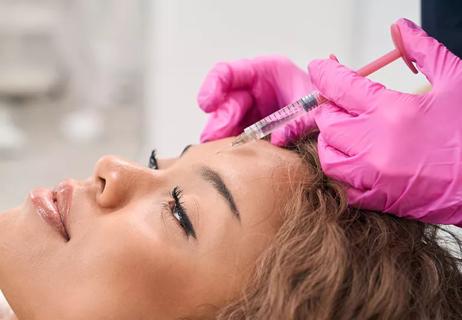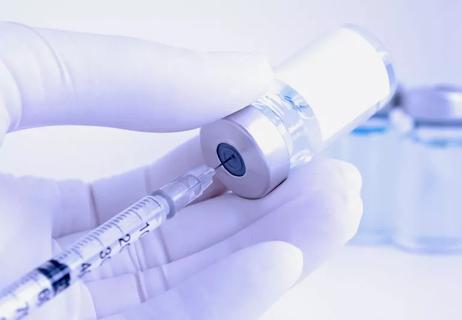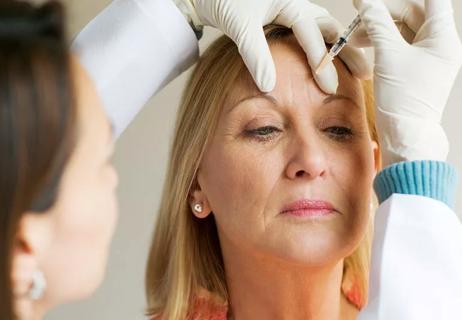It’s a treatment for spasmodic dysphonia

One of the most helpful tools for an ear, nose and throat specialist treating patients with certain vocal disorders is, surprisingly, botulinum toxin. That’s right – Botox®, the wrinkle-reducing drug.
Advertisement
Cleveland Clinic is a non-profit academic medical center. Advertising on our site helps support our mission. We do not endorse non-Cleveland Clinic products or services. Policy
“Botox has been the workhorse for movement disorders in the larynx for quite some time – specifically for dystonia,” says Paul Bryson, MD, Laryngology Section Head and Director of the Voice Center. “It’s truly something that’s helpful for a lot of different things.”
Dysphonia refers to a voice that’s hoarse, choppy, shaky, strained, breathy or otherwise abnormal. In the case of spasmodic dysphonia, that happens because of involuntary spasms in the muscles of the voice box.
The process of speaking is quite complicated, involving many muscles and neurological pathways. A simplified way of thinking about it is that the sound of your voice is created by vibrations that occur as air pushes across your vocal cords, which are folds of tissue that are inside your larynx (also known as the voice box).
In people with spasmodic dysphonia, the muscles of the larynx (either the adductor or abductor muscles, or both) contract and spasm involuntarily when they’re being used. This can make someone’s voice break or sound strained.
“People have a lot of fatigue when they try to talk, and their voice does not sound normal,” Dr. Bryson says.
Verbal communication with family or at work becomes very taxing and difficult, and it can have a profound impact on someone’s quality of life.
Spasmodic dysphonia usually shows up around middle age, and it’s more common in women, Dr. Bryson says.
Advertisement
While it probably won’t get worse over time, it’s also not likely to get better on its own. Treatment can make it less strenuous for people with this disorder to communicate verbally.
Spasmodic dysphonia treatment often involves collaboration between an otolaryngologist and a speech-language pathologist.
It might include Botox, which has been used for vocal disorders for more than 30 years and is supported by several studies demonstrating that it is generally effective and well tolerated.
During an in-office procedure, an otolaryngologist injects a tiny amount of Botox through the skin of the neck directly into a patient’s muscles in the larynx that are affected by the disorder. Botox limits the release of certain neurotransmitters that cause these muscles to spasm.
Speech might not improve right away after the injection – in fact, it might actually get worse before it gets better.
But within a few weeks, a patient should notice that they don’t have to work as hard to speak, and that their voice sounds smoother and more natural. Those benefits generally stick around for three to four months, though they last longer for some people and fade quicker for others, Dr. Bryson says.
It may also take some time to get the dosing right. Because the voice box also plays a role in swallowing and breathing, some people experience some difficulty during the first few days after treatment. It may be helpful for patients to write down any side effects they experience and bring them to the next doctor appointment.
“With the dosing, we really try to strike a balance between side effects and the length of benefit a person gets,” Dr. Bryson says. “Each injection is preceded by a conversation about how the last one went, how long the side effects went on and how long the benefit lasted. We try to tailor the dosing to a person’s response.”
Spasmodic dysphonia is just one of many causes of voice disturbances, but it’s the one that’s most helped by Botox. Some patients with vocal tremor, which is also a movement disorder, may benefit from Botox, too, Dr. Bryson says.
For more information on this treatment, he recommends visiting the National Spasmodic Dysphonia Association.
Advertisement
Learn more about our editorial process.
Advertisement

Although Botox isn’t an FDA-approved treatment for TMD pain, it’s still considered a good supplemental therapy in some cases

Most recommended precautions center around minimizing bruising or swelling

With repeat injections over time, you may be able to slow the development of new wrinkles

The cosmetic injection may help train your muscles out of frowning, but there’s no hard data to say for sure

One reduces wrinkles by relaxing muscles; the other adds volume and smooths skin

The big difference with this procedure is the smaller dosing

It’s an FDA-approved treatment for urinary incontinence and overactive bladder

Both are used to treat fine lines and wrinkles

If you’re feeling short of breath, sleep can be tough — propping yourself up or sleeping on your side may help

If you fear the unknown or find yourself needing reassurance often, you may identify with this attachment style

If you’re looking to boost your gut health, it’s better to get fiber from whole foods